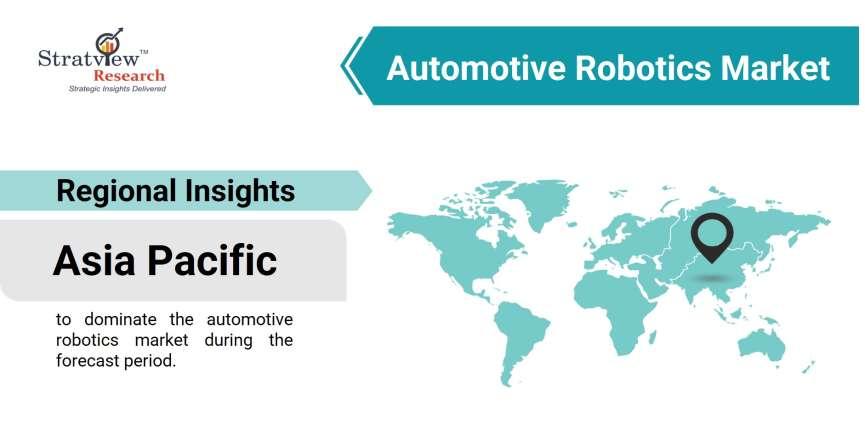The automotive industry is undergoing a profound transformation driven by automation, electrification, and connectivity. Robotics plays a crucial role in this metamorphosis, shaping the future of car manufacturing and revolutionizing various segments of the automotive landscape. This article delves into the global automotive robotics market, exploring its current state, projected growth, key developments, and major players.
Market Overview and Growth:
As per Stratview Research, the global automotive robotics market size reached USD 8.46 billion in 2022 and is expected to witness significant growth, reaching USD 12.99 billion by 2029, exhibiting a CAGR of 6.3% during the forecast period (2023-2029). This robust growth is fueled by several factors, including:
- Rising labor costs: Increasing automation becomes an attractive solution to combat rising labor costs and ensure production efficiency.
- Demand for complex vehicles: The growing popularity of electric vehicles and autonomous cars necessitates advanced robotics for intricate assembly processes.
- Focus on quality and productivity: Robotics enhances production consistency, minimizes errors, and boosts overall productivity.
- Government initiatives: Supportive government policies and investments in automation further accelerate market growth.
Key Developments and Trends:
Several key developments are shaping the automotive robotics landscape:
- Collaborative robots (cobots): The emergence of cobots fosters human-robot collaboration, offering flexibility and affordability for smaller tasks.
- Artificial intelligence (AI) and machine learning (ML): Integration of AI and ML improves robot accuracy, adaptability, and decision-making capabilities.
- Lightweight robots: Advancements in materials and design lead to lighter robots, enabling faster movements and wider applications.
- Vision systems: Enhanced vision systems allow robots to perform complex tasks like defect detection and precise part handling.
- Cloud robotics: Cloud-based solutions enable data sharing, remote monitoring, and real-time optimization of robotic operations.
Major Players and Competitive Landscape:
Leading players in the automotive robotics market include:
- ABB
- KUKA
- Yaskawa Electric
- Fanuc
- Denso Wave
- Nachi-Fujikoshi
- Kawasaki Heavy Industries
- COMAU
- Seiko Epson
- Rockwell Automation
These companies are constantly innovating and expanding their product offerings to cater to the evolving needs of the automotive industry. Mergers and acquisitions, strategic partnerships, and technological advancements are shaping the competitive landscape.
Challenges and Opportunities:
Despite the positive outlook, the automotive robotics market faces certain challenges:
- High initial investment: Acquiring and implementing robotic solutions can be expensive, posing a barrier for smaller players.
- Skilled workforce: The transition to automation requires upskilling and training the workforce to operate and maintain robots effectively.
- Safety concerns: Addressing safety concerns and ensuring human-robot collaboration remains crucial.
However, these challenges are accompanied by significant opportunities:
- Customization and personalization: Robotics enables flexible and efficient production of customized vehicles to cater to individual preferences.
- Sustainability: Robots can improve production efficiency and reduce waste, contributing to sustainable manufacturing practices.
- New applications: Emerging segments like autonomous driving and in-vehicle robotics offer further growth potential.
Conclusion:
The automotive robotics market is poised for robust growth, driven by automation trends, technological advancements, and evolving automotive needs. By addressing challenges and capitalizing on opportunities, robotics will play a pivotal role in shaping the future of the automotive industry, promoting efficiency, precision, and sustainability.
